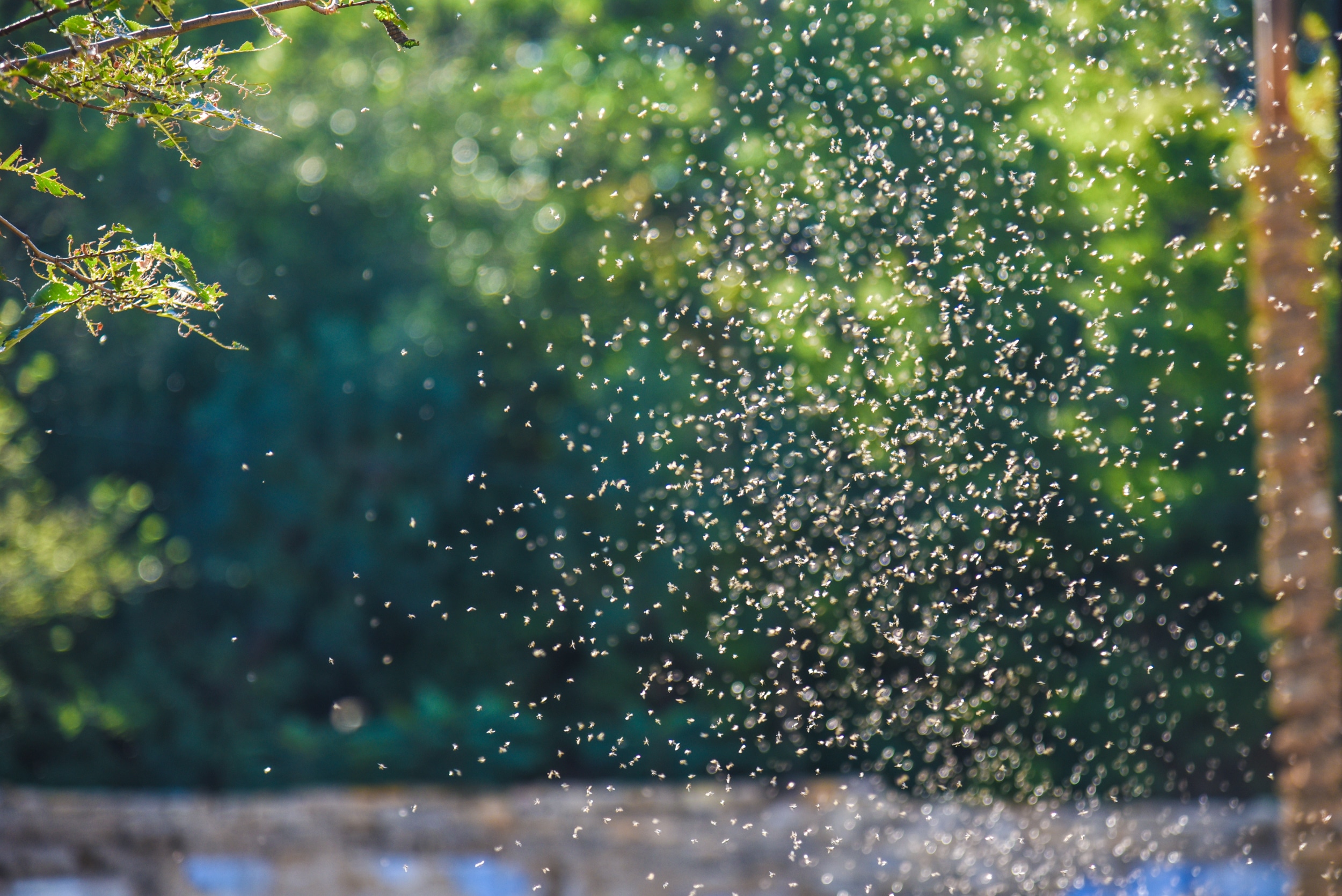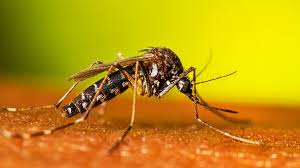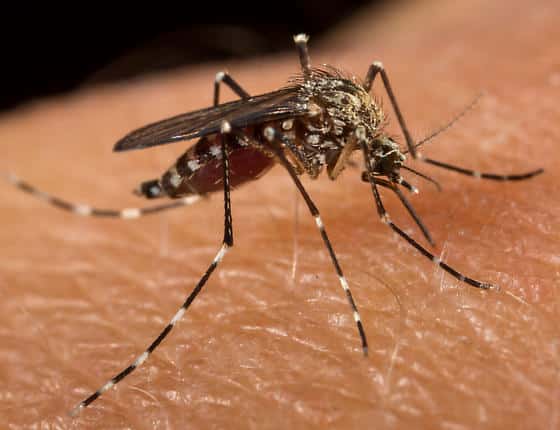
The sound of a mosquito buzzing is enough to send anyone swatting. Due to the warm weather and endless breeding spots, these pests are everywhere in Southern California. They lay eggs in standing water, puddles, birdbaths, and even forgotten flower pots. Some bite all day, and others wait for nightfall, but either way, they’re a problem and a health hazard to locals.
This blog discusses the 4 most common types of mosquitoes in Southern California, their behavior, and the risks they pose. We’ll also share proven prevention tips to keep you safe from these pests year-round. Let’s get started!
4 Types of Mosquitoes in Southern California
Southern California mosquitoes are found everywhere, but not all of them are the same. Some are harmless, while others carry diseases like West Nile virus, Zika, and dengue. A few prefer biting in broad daylight, while others wait until nightfall. If you’ve ever wondered what kind of mosquito just left you itching, knowing the most common mosquito types in California can give you the answers you need.
Some mosquitoes bite once and move on, while others won’t let up. A few can even make you sick, so it’s good to know which ones are in your environment. The more you understand their behavior, the easier it is to be aware of potential risks and how to keep these pests at bay.
We’re going to explore the 4 most common mosquito species in Southern California. Each has different habits and risks, and knowing what’s out there can help you recognize what you’re dealing with.
1. Aedes Mosquito

Aedes aegypti, also known as the yellow fever mosquito or black mosquito, is one of the most common species in California. It stands out with its black body and white-striped legs. Unlike many mosquitoes that emerge at dusk, this one is an aggressive daytime biter. This mosquito type prefers to stay close to people and is often found in urban areas, where it breeds in small amounts of standing water, such as flower pots, birdbaths, and clogged gutters.
Aedes mosquitoes in California are more than just a nuisance—they spread viruses such as Zika, dengue, and chikungunya. Because they bite multiple times in one feeding session, they increase the chances of transmitting diseases. Unlike other species that travel long distances, Aedes mosquitoes tend to stay near where they hatch, making them a persistent problem in California neighborhoods with standing water.
2. Striped Mosquito

The Aedes albopictus, or striped mosquito, is an aggressive pest commonly found throughout Southern California. These mosquitoes are recognized by their black-and-white striped bodies, earning them the nickname Asian tiger mosquito in cities like Los Angeles. This species is most active during the day and bites animals.
Striped mosquitoes breed in small amounts of standing water, so even a neglected cup or a clogged drain can provide a perfect home for their larvae.
Understanding when mosquito season is in Southern California is important. Mosquito activity peaks during the warmer months, typically from late spring through early fall. During this period, the striped mosquitoes are most active. Understanding the types of mosquitoes in Southern California will help you avoid bites and protect yourself from diseases, even when they’re most active.
3. Sierra Mosquito

Aedes sierrensis, also known as the Sierra mosquito, is found primarily in the foothills and mountain areas of California. Unlike other mosquitoes, they’re more commonly active during the warmer months, especially in spring and summer. This species prefers cooler environments compared to others that thrive in urban heat.
Sierra mosquitoes carry diseases such as dog heartworm, though they’re not typically a major threat to human health. This species of Southern California mosquitoes’ peak activity is during the day, which is different from other mosquitoes that are more active at dusk or dawn.
While Sierra mosquitoes are common in the Sierra Nevada and nearby regions, they can also be found in other areas of California. Being mindful of when and where these mosquitoes thrive can help you avoid them and ensure your pets stay safe.
4. Anopheles Freeborni

Anopheles freeborni mosquitoes are common in California, particularly in warmer months. This type of mosquito is most active during mosquito season, and its behavior sets it apart. Unlike some mosquitoes that bite during the day, Anopheles freeborni mosquitoes typically feed at night, making them a concern during nighttime activities.
Knowing when mosquito season is over in California is important because it signals when Anopheles freeborni activity begins to decrease. As temperatures cool down, these mosquitoes tend to become less active. However, they can still be found in specific areas, especially if there is still standing water for breeding.
If you’ve experienced a mosquito bite around your ankles, you likely encountered ankle-biting mosquitoes in California, which are often Anopheles freeborni. These mosquitoes prefer to target the lower legs, which explains why bites around your feet and ankles are more common.
Mosquito-Borne Illnesses in Southern California
Mosquitoes are more than just a nuisance in Southern California. Some species carry viruses that can lead to serious health concerns. In California, some native mosquito species, such as the Western Malaria Mosquito (Anopheles freeborni) and the Inland Floodwater Mosquito (Aedes vexans), are often mistaken for disease carriers due to their size. However, many of these larger mosquitoes in California are harmless.
One of the most concerning mosquito-borne illnesses in the region is Zika virus. It is primarily spread by Aedes mosquitoes in Southern California. These black-and-white-striped mosquitoes, including Aedes aegypti and the Asian tiger mosquito, bite aggressively during the day and can carry viruses like dengue and chikungunya. While outbreaks in the Golden State have been limited, the presence of these mosquitoes increases the risk.
Mosquito Control and Prevention Tips in California
Mosquitoes are more than just a summertime annoyance; they can carry diseases and disrupt daily life. Whether you’re avoiding a common house mosquito or a tiger mosquito in California, small changes make a big difference. While completely eliminating these pests isn’t possible, taking the right steps can significantly reduce their presence:
Protect Yourself from Mosquito Bites
The simplest way to avoid mosquito bites is to limit skin exposure. Wear long sleeves, pants, and light-colored clothing, especially during peak mosquito hours. Since mosquitoes are attracted to body heat and sweat, use a good-quality insect repellent. Products containing DEET, picaridin, or lemon eucalyptus oil offer strong protection. If you’re spending time outdoors, reapplying repellent as directed can prevent bites.
Consider using mosquito nets for extra protection, especially in areas with a high mosquito population. Fans can also help, as mosquitoes struggle to fly in strong air currents.
Keep Your House Clean
Mosquitoes breed in standing water, so water sources must be eliminated to control them. Even small amounts of water, like what collects in plant saucers or clogged gutters, can become breeding grounds. Regularly empty and clean birdbaths, pet bowls, and outdoor containers to prevent mosquitoes from multiplying.
For long-term prevention, consider adding mosquito dunks to water sources that cannot be emptied. These contain bacteria that target mosquito larvae without harming other wildlife. You can also install screens on windows and doors and use outdoor insect traps to reduce mosquito activity around your home.
Contact a Mosquito Control Company
If mosquitoes are a persistent problem in your area, contact a local mosquito control team that can provide guidance and support. Some companies even provide free mosquito fish, which help control mosquito populations by feeding on larvae in ponds and standing water.
Call Preventive Pest Control for Effective Mosquito Management
Mosquitoes aren’t just annoying, they can also carry diseases, which makes prevention a must. Luckily, keeping them away doesn’t have to be complicated. Simple habits like wearing repellent, covering up when needed, and getting rid of standing water can go a long way. When everyone does their part, mosquitoes have fewer places to breed and fewer chances to bite.
A quick check for water buildup in your yard or making sure your window screens are intact might not seem like much, but these small steps add up. If you live in an area with heavy mosquito activity, teaming up with your neighbors or checking in with local mosquito control programs can make an even bigger difference.
Still dealing with mosquitoes despite taking preventive measures? That’s where Preventive Pest Control can help. Our experts identify potential risks and apply targeted mosquito control solutions to protect your home or business no matter the season. If you’re in the area, explore our Orange County pest control services or pest control in the Inland Empire for specialized assistance. For those who need year-round services, we offer subscription plans. Contact us today and enjoy your outdoor spaces without the constant buzzing and biting.
